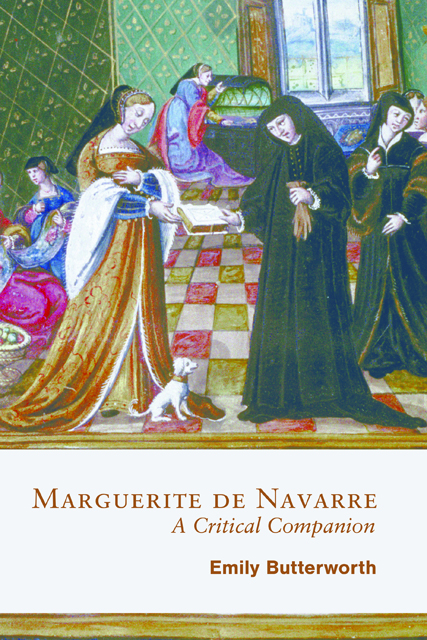Book contents
- Frontmatter
- Dedication
- Contents
- List of Illustrations
- Acknowledgements
- Note on Names and Editions
- Editions of Reference
- Introduction: A Brief Literary and Historical Chronology
- 1 Communities
- 2 Religion
- 3 Politics
- 4 Women and Men
- 5 Desire
- 6 Form and Technique
- Conclusion: Print and Public
- Bibliography
- Index
Conclusion: Print and Public
Published online by Cambridge University Press: 20 December 2023
- Frontmatter
- Dedication
- Contents
- List of Illustrations
- Acknowledgements
- Note on Names and Editions
- Editions of Reference
- Introduction: A Brief Literary and Historical Chronology
- 1 Communities
- 2 Religion
- 3 Politics
- 4 Women and Men
- 5 Desire
- 6 Form and Technique
- Conclusion: Print and Public
- Bibliography
- Index
Summary
In conclusion, I consider the ways in which Marguerite’s work first appeared in print and its fortunes in literary culture. The move into print changes and broadens a work’s audience, and in the prefaces to readers we will see authors, editors, and translators attempting to control or at least influence their readers’ reactions to their books. Marguerite made a significant impact in the overwhelmingly male world of print, producing works that continued to be best-sellers throughout the sixteenth century. How she presents herself and her work to her potential readers teaches us as much about the options and strategies open to women in the early modern period as do the manoeuvrings and discussions of her storytellers in the Heptameron. Marguerite was exceptionally well educated for a sixteenth-century woman, even for a woman of her class, and her publishing success was equally exceptional: reprintings of the Heptameron are comparable in number to Rabelais’s best-selling works and appeared throughout the sixteenth century. But she was still bound by the limits of her culture. The Aristotelian categories that we saw in operation in Rabelais and sixteenth-century culture more generally worked against women’s public acknowledgement of authorship and publishing. Women’s public speech was linked to sexual licence and a transgression of the proper female domestic space, which meant different strategies were necessary for women authors in print than for their male counterparts.
First, I examine how Marguerite was perceived and presented in eulogies after her death. Then, I look at Marguerite’s own strategies for appearing in print in her selected works, Les Marguerites de la Marguerite des princesses, and examine how the Heptameron was presented to the reading public in its first two printed editions. Finally, I explore how the Heptameron, her most successful work, was rewritten and translated in the sixteenth century and beyond. Every moment of publication (either manuscript or print) is a makingpublic in two senses: the work is put into public circulation and athe same time a public is shaped and even created for the work.
- Type
- Chapter
- Information
- Marguerite de NavarreA Critical Companion, pp. 191 - 206Publisher: Boydell & BrewerPrint publication year: 2022



